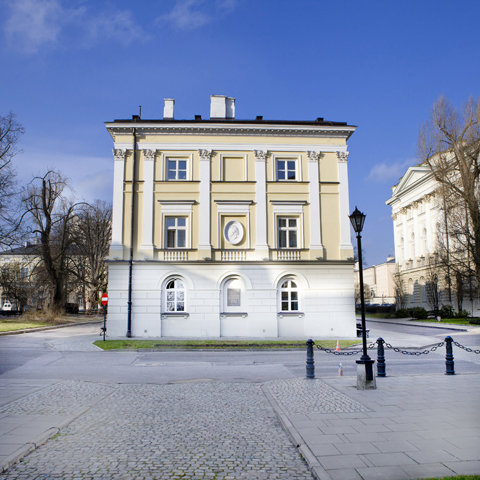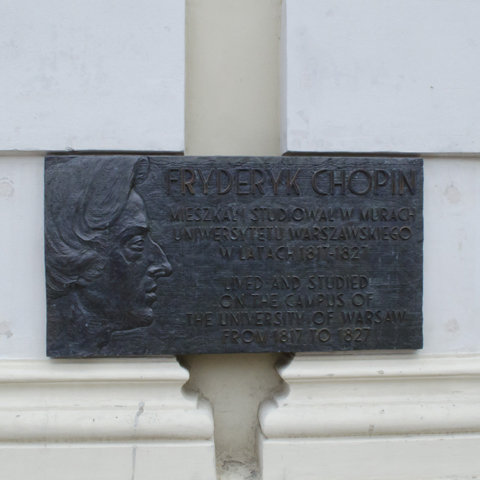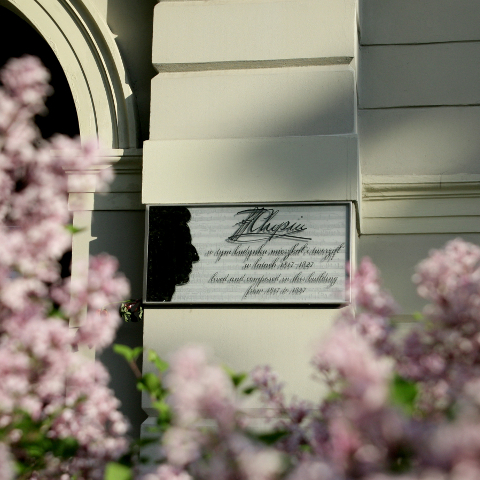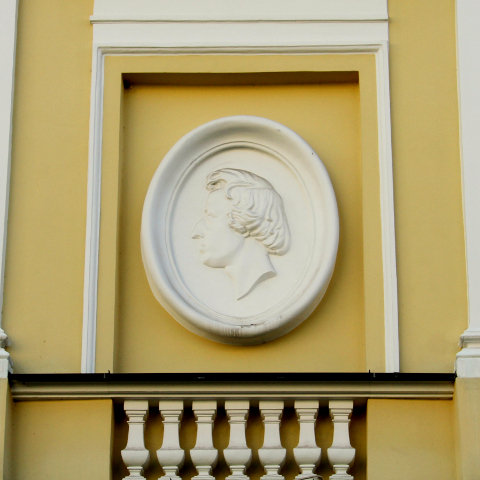Composers / Fryderyk Chopin / Places catalog
Casimir Palace
Julian Ursyn Niemcewicz wrote in his Pamiętniki [Memoirs] at the turn of 1817: ‘The second annexe at Casimir Palace has gone up […] A beautiful building designed by Aigner should be erected on Plac Kazimierzowski for the university next year […]. The refurbished Casimir Palace already has a library and a college residence’.
Warsaw University was constituted in 1816 and formally inaugurated on 14 May 1818, although the first lectures had been given a year earlier. The Warsaw Lyceum was transferred from the Saxon Palace to Casimir Palace. The Lyceum teachers were given flats, mainly in the left annexe of the palace (on the right when you stand facing the building). The Chopin family occupied apartment 18 on the second floor in the central part of the building.
Mikołaj, Justyna and their four children lived there with four boarders: Eustachy Marylski, Jan Białobłocki, Dominik Dziewanowski and Tytus Woyciechowski. The boarding house was famous for its exceptionally high standard and family atmosphere. Mikołaj Chopin spoke to his charges exclusively in French, in order to maintain contact with the language, and he was assisted in his classes with the boarders by the governors Antoni Barciński and Feliks Żochowski, as well as Józef Tetzner, who taught them German.
The palace apartment appears in the memoirs of Michalina Gloger, née Wojna: ‘The Chopins’ flat consisted of a few spacious, modestly furnished rooms, but they were always exceptionally clean and orderly. Mrs Chopin, née Krzyżanowska, was very fond of them. There were mahogany pieces of furniture in the “reception” room covered with striped sackcloth, as was common in every urban and rural middle-class home at the time. The only other item of furniture I remember is the very long piano on which the 15-year-old Fryderyk seldom played. Looking back, I think this might have been because his impecunious parents could not afford the extremely expensive instrument that would have befitted the young master’s genius’.
One of the boarders, Eustachy Marylski, recounted years later: ‘We lived on the second floor of the annexe to the right of the lyceum, which housed the cadets’ barracks on the ground floor, where the public library is now. The rector of the lyceum, Samuel Bogumił Linde, and Fr Wojciech Szwejkowski, the vice-chancellor of Warsaw University, lived on the first floor of the same annexe. Kolberg, Kazimierz Brodziński and many other university professors lived on the ground floor. [...] Chopin had a silver snuff box shaped like a lion cub that he left on his desk. After getting up earlier than him, or late at night, we took snuff for fun. He would bang his lion cub whenever the pupils in his class made a noise, and we would all be quiet. Nobody who boarded with the Chopins was allowed to go out onto the street alone. We sat down at the table with the Chopins and their children, Ludwika, Izabella, Emilia and Fryderyk, whose name was becoming known throughout the artistic world’.
-

Kazimerzowski Palace. Phot. Waldemar Kielichowski.
-

Kazimerzowski Palace. Phot. Waldemar Kielichowski.
-

Kazimerzowski Palace. Phot. Waldemar Kielichowski.
-

Memorial plaque at the gate of University of Warsaw. Phot. Waldemar Kielichowski.
-

Memorial plaque. Phot. Łukasz Oracz.
-

Memorial relief. Phot. Łukasz Oracz